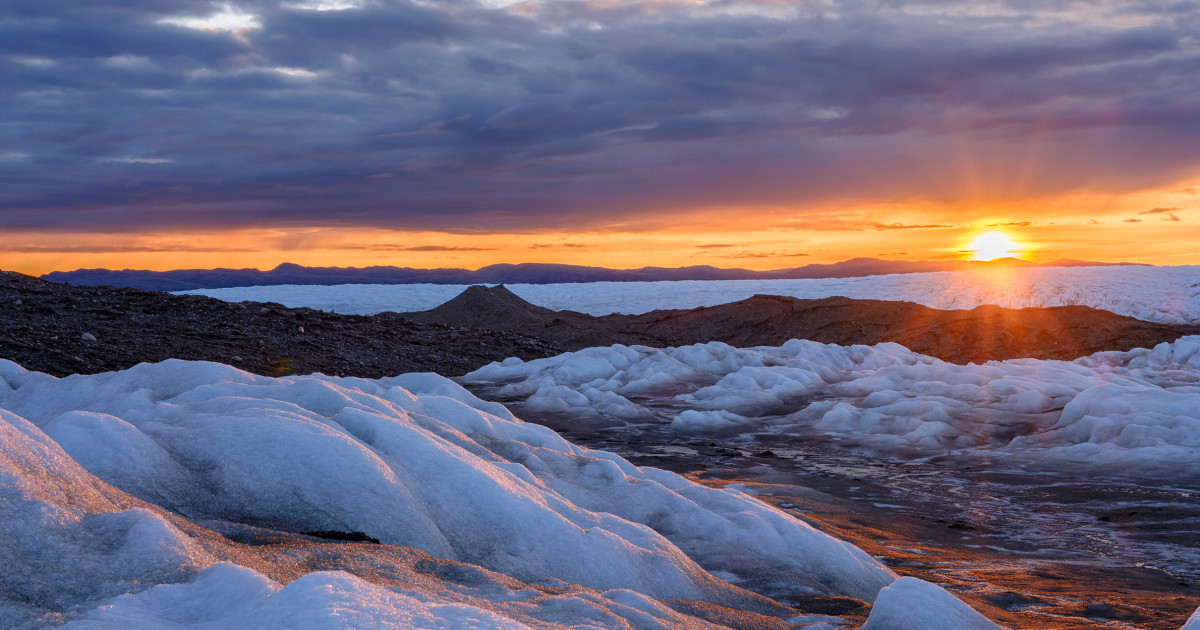- Click to share on Facebook (Opens in a new window)
- Click to share on Twitter (Opens in a new window)
- Click here to share on LinkedIn (Opens in a new window)
- Click to email a friend (Opens in a new window)
#ElDatoDeHoy: The polar bear would be extinguished sooner than thought 0:21
(CNN) - The impact of the climate crisis is becoming increasingly obvious to humans and their animal neighbors. But among all species, polar bears could be some of the most affected.
Bears depend on sea ice for almost all aspects of their survival: it is where they hunt seals, travel, make dens and mate. So, the earlier the season the ice starts to melt, the less time they have to eat and procreate.
The findings were summarized in a new study published in Ecological Applications.
Polar bear wanders hundreds of kilometers from his home 0:52The researchers found that polar bears are becoming thinner and have fewer puppies, and their declining health is linked to the melting of sea ice.
"Climate-induced changes in the Arctic are clearly affecting polar bears," study author Kristin Laidre, a professor of aquatic and fishery sciences at the University of Washington, said in a statement. "They are an icon of climate change, but they are also an early indicator of climate change because they rely heavily on sea ice."
Polar bears are considered a vulnerable species, a level below "endangered." If climate trends continue, their populations will surely be depleted even more. Seeing the effect of an increasingly small habitat on polar bears could convince conservationists to take more immediate action.
And studying how melted ice affects them could have broader implications for how it will eventually affect other species. "These bears inhabit a seasonal ice zone, which means that sea ice clears completely in summer and is open water," he said. "Bears in this area give us a good basis to understand the implications of the loss of sea ice."
Bears spend less time on land and lose weight
Laidre and his colleagues tracked the movements of adult polar bears in Baffin Bay, a body of water off the west coast of Greenland, for two periods of time in the 1990s and 2010.
Between 2009 and 2015, bears spent an average of 30 more days on land than in the period from 1991 to 1997. This is because sea ice is melting at a faster and earlier rate in the season than 23 years ago. or 29 years.
Sea ice increases and decreases with the seasons, and when there is less sea ice, polar bears settle on the neighboring island of Baffin. They wait there until there is enough sea ice to hunt seals.
And the more time they spend on land, the more they spend near the coast and are unable to hunt, the thinner they become.
The researchers rated the body conditions of the bears on a scale of 1 to 3, 1 means thin and 3 means fat (fat is good and keeps them warm).
Of the 352 bears they analyzed, not even 50 were considered fat or fat.
The availability of sea ice was to blame: the researchers found that in years with less sea ice, bears weighed less.
"When bears are on land, they don't hunt seals and instead depend on their fat deposits," Laidre said. "They have the ability to fast for prolonged periods, but over time they become thinner."
Less time on the ice is linked to fewer puppies
The deterioration of the health of bears also affected the size of their litters.
Polar bears had more puppies when sea ice was more widely available and when the "spring break", the period when the ice melts and breaks and there is more water available, occurred later in the season.
Now that bears are thinner, they have fewer puppies. The litters of two puppies were once the norm for healthy adult polar bears, but they could "disappear" if the loss of sea ice continues, Laidre said.
It is the first time that this change in the size of the litter is observed.
Hungry polar bears invade Russian village 0:42The increasingly small habitats push the bears inwards
The last polar bear count in Baffin Bay was conducted between 2012 and 2013; at that time, there were more than 2,800 bears in the area, according to the IUCN Group of Polar Bear Specialists. But the group had not recorded how many there were before the most recent count was made, so it is difficult to know if it is an increase or a decrease.
However, the results of the Washington University study are not promising.
The melting of sea ice is partly the reason why polar bears "nutritionally stressed" are seen in residential areas, stalking neighborhoods that they had never seen before. They are driven there by hunger and an increasingly small habitat, and can lead to greater conflict between humans and bears.
A neighborhood invaded by polar bears 0:32The future of polar bears, the researchers write in their findings, depends on the ability of scientists to predict how climate change will continue to impact bears. The pace of population changes is already surprising, so a conservation response will have to reach an equally rapid pace, say the researchers.
Polar Bear







